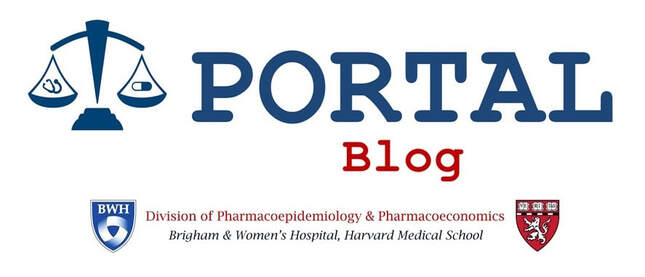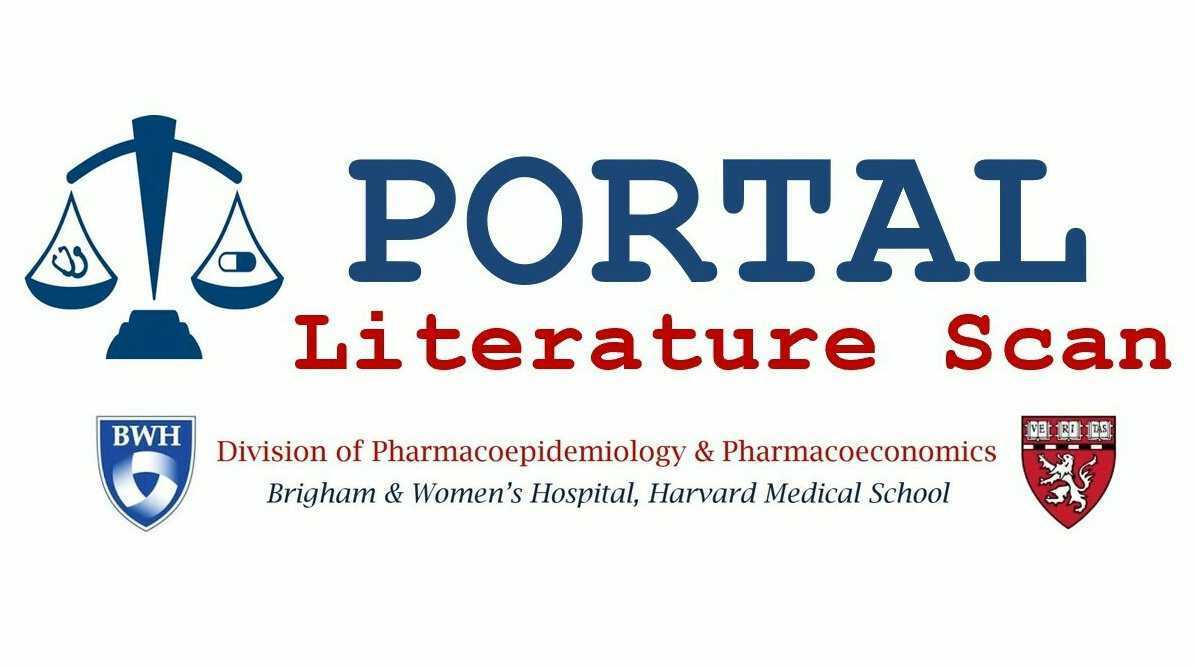|
Elvira D'Andrea
A major barrier to effective implementation of favorable findings from trials on anti-diabetic treatments – such as glucagon-like peptide-1 receptor agonists (GLP-1 RA) or sodium-glucose cotransporter-2 inhibitors (SGLT-2i) – into clinical practice is the scarcity of evidence describing the extent to which these results may be generalizable to all patients with type 2 diabetes or whether they may vary across subgroups of the population. Such variation in therapeutic outcome is called “treatment effect heterogeneity.” Identifying treatment effect heterogeneity in a trial population is necessary to individualize treatment and target the groups of patients that optimally benefit from a specific therapeutic strategy in clinical practice. However, subgroup analyses within a single trial are not usually powered to detect treatment effect heterogeneity. A new study from PORTAL published in Cardiovascular Diabetology explored whether diverse subgroups of patients with type 2 diabetes (enrolled in clinical trials) appear to have different rates of major cardiovascular events to two important new categories of anti-diabetic drugs: SGLT-2is and GLP-1 RAs. The identification of subgroups of interest emerged from baseline characteristics of the trial population, which have been deemed a priori as potential treatment effect modifiers in trials investigating the association between SGLT-2i or GLP-1 RA drugs and major cardiovascular events. The authors conducted an exploratory meta-analysis of placebo-controlled randomized trials that investigated products within the SGLT-2i and GLP-1 RA drug classes in participants with type 2 diabetes. The trials need to report major adverse cardiovascular events as a primary outcome, follow-up patients for longer than 6 months, and describe phase 3 trial dosage. The potential modifiers were baseline factors of the trial populations measured at randomization and were classified in four groups: cardiovascular factors (established atherosclerotic cardiovascular disease and heart failure), renal function (estimated glomerular filtration rate, as indicator of chronic kidney disease), cardiometabolic factors (HbA1c, duration of diabetes, BMI and systolic and diastolic blood pressure) and demographic factors (age, gender, race). All potential effect modifiers considered were part of the pre-specified subgroup analyses of the included trials. Ten trials enrolling 89,790 patients were included in the analyses. The average benefits of SGLT2i or GLP1-RA drugs considering all patients enrolled in the trials, regardless of their different baseline characteristics, resulted in a 11-12% risk reduction of major adverse cardiovascular events. However, subgroup meta-analyses showed a 14% risk reduction of major cardiovascular events in patients with established cardiovascular disease [GLP1-RA: 0.86 (95% CI, 0.80-0.93); SGLT-2i: 0.86 (0.80-0.93)], and no effect in at-risk patients without history of cardiovascular events [GLP1-RA: 0.94 (0.82-1.07); SGLT-2i: 1.00 (0.87-1.16)]. A trend toward larger treatment benefits was observed with SGLT-2i among patients with chronic kidney disease [0.82 (0.69-0.97)], and patients with uncontrolled diabetes for both GLP1-RA or SGLT-2i [GLP1-RA: 0.82 (0.71-0.95); SGLT-2i: 0.84 (0.75-0.95)]. Uncontrolled hypertension, obesity, gender, age and race did not appear to modify the effect of these drugs. Among several clinically important patient characteristics measured before treatment initiation, history of established atherosclerotic cardiovascular disease appears to be the only modifier of the treatment effect of SGLT2i or GLP1-RA drugs with respect to major cardiovascular events. We observed signals toward larger benefits among patients with baseline chronic kidney disease for the SGLT-2i treatment, and among patients with baseline uncontrolled diabetes for both SGLT-2i or GLP1-RA drugs. Presence of chronic kidney disease and uncontrolled diabetes should be further investigated as potential effect modifiers of the association between SGLT2i or GLP1-RA drugs and major cardiovascular events. Leah Rand Last Friday, September 11th, PORTAL hosted the first event in its annual series of Health Policy and Bioethics Consortia, “COVID-19, Public Health Ethics and Policy for Pandemics.” The consortia aim to define and stimulate discussion of key issues in healthcare and public health that raise ethical questions and policy responses, and the series brings together experts with different perspectives to consider the problems and solutions. Since the SARS-CoV-2 pandemic began, a wide range of policy and ethics issues have arisen; the consortium focused on the challenge of making policy decisions when there is uncertainty about the pandemic and moral uncertainty about what policies and actions are right to take.  Presenting first was Marc Lipsitch, DPhil, Professor of Epidemiology and Director of the Center for Communicable Disease Dynamics at the Harvard T.H. Chan School of Public Health. As a well-known researcher in the field of infectious disease dynamics, Dr. Lipsitch explained some of the basics of modeling a situation like the SARS-CoV-2 pandemic and how the available data is rarely sufficient to draw conclusions with high certainty. The value of the models can be to reveal the extent of uncertainty and assist decision-makers to understand the risks of different policy options, including doing nothing. In his talk, he demonstrated how modeling can provide a useful resource when decisions need to be made quickly, and, using the example of a 2002 smallpox vaccination campaign in the US, that the information must be frequently re-assessed to determine if the policy needs to change.  Next, Matthew Wynia, MD, MPH, Director of the Center for Bioethics and Humanities at the University of Colorado Anschutz Medical Campus, delved into the ethics of the COVID-19 response and attitudes towards infectious disease. He structured his presentation around “the three R’s of ethics in epidemics”: restrictions on liberty, resource allocation, and responsibilities. Dr. Wynia discussed the history of blame and stigmatization of infectious diseases before turning to the current situation. He also emphasized the need for frequent re-assessment of decisions since initial decisions, like ventilator allocations, should be revised to the immediate situation. Polling the audience, he highlighted the kinds of ethical problems and disagreement that arise, even when unpacking simple sounding principles like “save the most lives.” He concluded by discussing the evidence for quarantine and the challenges of imposing restrictions on liberty, pointing to experiences from the SARS epidemic when some quarantine attempts backfired. The two speakers then took audience questions, engaging in a discussion about how to present complicated and changing information to the public, promote public trust in and the trustworthiness of institutions, and address pre-existing inequities in new public health decisions. As Dr. Lipsitch noted, good decision-making early on in the pandemic could preclude some ethical challenges later in it; but some of these challenges, as noted by Dr. Wynia, arise from balancing between the ethical principles that should guide any response.
A recording of the session will be available soon. Michael Liu
Prescription drug prices in the US far exceed those of other countries given that manufacturers set prices at their own discretion. This is in contrast to the UK where prescription drugs are paid for by the National Health Service (NHS), which in turns plays a central role in negotiating the prices of brand-name drugs. For example, the Voluntary Scheme for Branded Medicines Pricing and Access places limits on NHS spending growth and profits that manufactures can earn on brand-name drugs. Recent political changes may affect how drugs are priced in the UK. The US and UK governments intend to form a bilateral trade agreement after the UK left the European Union on January 31 via Brexit. Pharmaceutical drug prices will likely be a central component of trade negotiations since the Trump Administration has ordered the US Trade Representative to combat global use of drug cost-containment measures. In fact, a recent summary of specific negotiating objectives published by the US Trade Representative reveals that it is pursuing “full market access” for US pharmaceuticals and medical devices in the UK. The US has successfully negotiated more industry involvement in drug pricing and elimination of cost-containment measures in past international trade agreements. Our new study, by PORTAL researchers in collaboration with researchers at the University of Oxford, aimed to provide context around the potential US-UK trade deal and estimate the cost impact of a scenario in which UK brand-name drug prices change to match those of the US. Using monthly prescribing data files from NHS England, the authors identified the costs and volume prescribed for all drugs in English primary care in 2018. The NHS spent £1.39 billion (~$1.8 billion) on 50 single-source brand-name drugs with the highest expenditure in English primary care. The authors conducted comparative cost analyses and projections using prices from Medicare Part D in the US. All drug prices in the US were more expensive than those of the UK, even after accounting for estimated US rebates. The US-English price ratios ranged from 1.3 to 9.9, with a mean ratio of 4.8. After accounting for price and volume, if NHS England paid US prices in 2018, then overall spending on the 50 single-source brand-name drugs would have been 4.6 times higher: an increase of £5.03 billion (~$6.6 billion). The projected spending increase on this cohort of 50 drugs represents 63% of all 2018 English primary care drug spending. Beatrice Brown, Neeraj Patel
Chana A. Sacks, Ameet Sarpatwari High prescription drug spending remains a major issue, as pharmaceutical manufacturers continue to mark up the prices of products during the COVID-19 pandemic. Brand-name drugs are the primary driver of this spending, with the prices of brand-name biologic drugs in particular having risen dramatically in recent years. When generic drugs become available, they can substantially lower drug prices, and policymakers hope that follow-on biologic drugs can eventually generate similar competition. Generic drugs are so effective at lowering drug prices because of state “drug product selection laws” that allow pharmacists to automatically fill prescriptions for brand-name drugs with generics and prescriptions for biologic drugs with FDA-designated interchangeable follow-on biologics. In a new study in JAMA Internal Medicine, we reviewed the current landscape of drug product selection laws in the US, including how different states approach interchangeable biologic substitution. We found considerable variation in these laws. For small-molecule drugs, 31 states did not mandate generic substitution by pharmacists (but merely made it “permitted”), 7 states required patient consent prior to generic substitution, 32 required special notification by the pharmacist, and 24 states did not explicitly protect pharmacists from liability related to making the substitution. Compiling a generic substitution score, in which a maximum of 1 point was assigned for each of the four exposure variables—with higher points indicating regulatory requirements limiting substitution—we found that 9 states had scores of 3 or higher. In the case of biologic drugs, 45 states had heightened requirements related to substitution of interchangeable follow-on biologics, most commonly requiring mandatory notification of the prescribing physician. Overall, this study demonstrates considerable scope for states to optimize their drug product selection laws to achieve more efficient substitution of FDA-approved generics and interchangeable biosimilars. These changes would lead to greater reductions in spending and improvements in patient adherence. Beatrice Brown
On August 30, FDA Commissioner Stephen Hahn remarked that the FDA is willing to issue an Emergency Use Authorization (EUA) for a vaccine before the completion of Phase III clinical trials, if the benefits outweigh the risks. EUA authority is granted by the Federal Food, Drug, and Cosmetic Act, allowing the FDA to make unapproved products or unapproved uses of an approved product available during a public health emergency in the absence of a suitable, approved alternative. EUAs have been issued for several drugs and products during the pandemic, including convalescent plasma just last week, remdesivir, and hydroxychloroquine (which has since been revoked). However, unlike drugs that are intended to treat unhealthy patients, vaccines are intended to be deployed to millions of healthy citizens, making safety and efficacy even more paramount. But a rushed EUA can undermine both this safety and efficacy. In a recent Viewpoint in JAMA, PORTAL researchers argue that premature rollout of a vaccine from unprecedented political and economic pressures could result in a major public health misstep. The authors explain the various mechanisms that FDA can utilize to expedite access to a vaccine, but they question whether expedited pathways—particularly, the issuance of an EUA—can negatively impact safety and efficacy by undermining randomized trials and public health measures like social distancing, as well as by missing opportunities for learning about the vaccine’s safety early on. Furthermore, current vaccine hesitancy not only makes it less likely that we will attain needed herd immunity, but it also means that any safety and efficacy issues with an expedited vaccine can undermine the public’s already fragile trust in vaccines. In the midst of one of the worst pandemics in recent history, science and data should come before politics and economics—the FDA can ensure the safety and health of the American public by acting on this data and not succumbing to political and economic pressures. |
AuthorPORTAL Blog posts are authored by PORTAL faculty, trainees, and collaborators. Archives
January 2022
Categories |
|
Program On Regulation, Therapeutics And Law (PORTAL)
Division of Pharmacoepidemiology and Pharmacoeconomics 1620 Tremont Street, Suite 3030 Boston, MA 02120 |








 RSS Feed
RSS Feed
